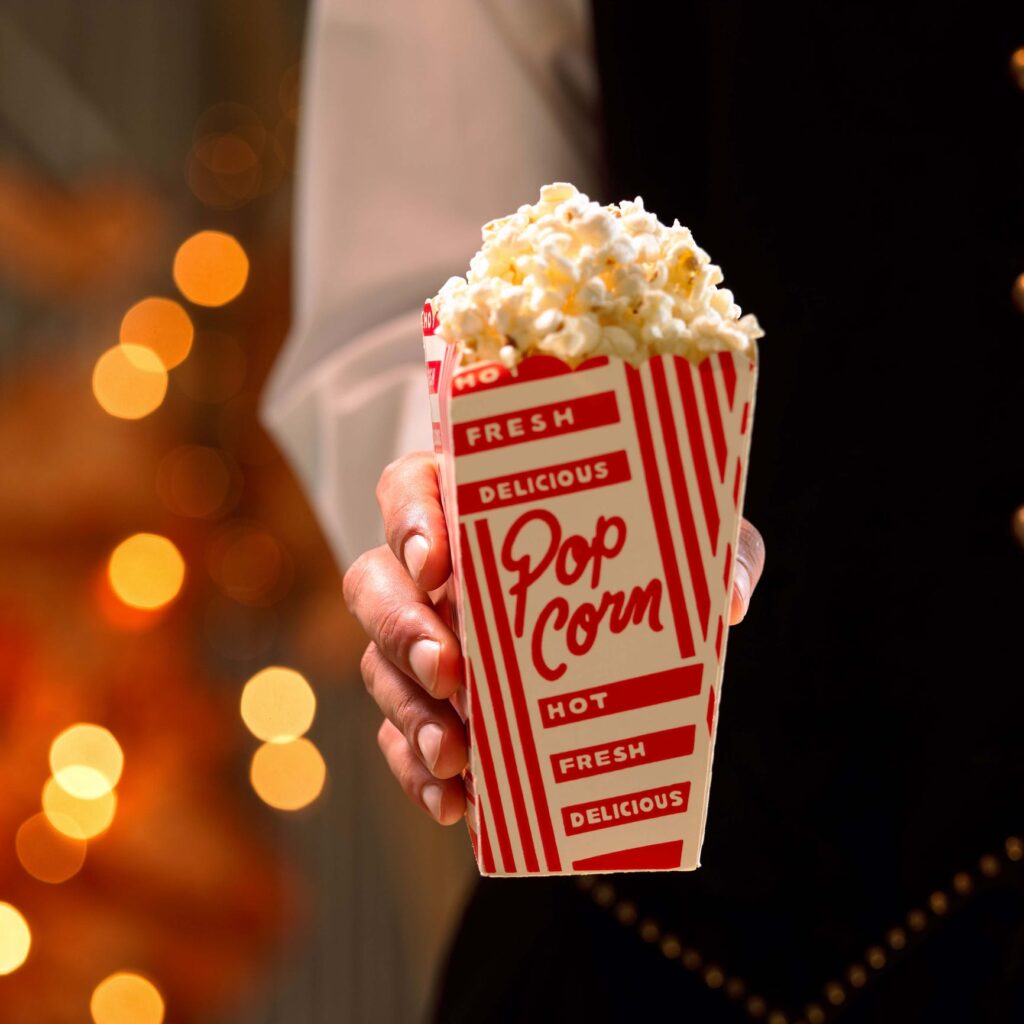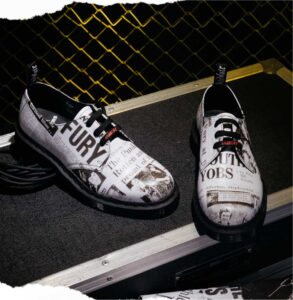
When we think of going to the movies, the image is almost incomplete without a buttery tub of popcorn in hand. It’s a pairing so natural that it’s difficult to imagine one without the other. But how did popcorn, once a common street snack, evolve into an essential element of the movie theater experience? This articles goes into the history, economics, and cultural significance of popcorn in theaters, unraveling the fascinating story of how this inexpensive treat became synonymous with the silver screen.
From Aztec Rituals to American Colonies
Popcorn has an ancient history that stretches back thousands of years. Archaeological evidence suggests that popcorn was enjoyed as early as 4,700 BC by the indigenous peoples of the Americas. In fact, popcorn played a role in Aztec culture not just as a food source but as an element of ritual ceremonies, where it was used to create decorations and ceremonial garlands.
When European colonists arrived in the Americas, they encountered popcorn and quickly adopted it as part of their diet. The popping of corn fascinated early colonists, and popcorn was enjoyed as a snack long before it found its way into movie theaters. During the 19th century, popcorn became a popular street food in the United States. Vendors would roam the streets with portable popcorn machines, selling the crunchy snack at fairs, parks, and public gatherings.
From Nickelodeons to the Silver Screen
The history of movie theaters in the United States dates back to the early 20th century. The first dedicated movie theaters, known as nickelodeons, emerged around 1905. These small, intimate theaters charged a nickel for admission and showed short films or silent movies. The experience of watching a film in a theater was a novelty, and nickelodeons quickly gained popularity, paving the way for larger and more sophisticated theaters.
However, early movie theaters were designed to be an upscale, classy experience. Theaters wanted to attract a wealthy clientele and modeled themselves after high-society venues like opera houses. For this reason, concessions were not sold inside the theaters, and patrons were not allowed to bring food inside. The idea was to maintain a clean, elegant atmosphere, free from the noise and mess associated with eating.
During this period, popcorn was still a street food, sold by independent vendors using hand-pushed carts. These vendors would often set up outside of theaters, taking advantage of the crowds that gathered before and after showings. Despite its close proximity to theaters, popcorn had not yet found its way inside.
The Turning Point for Popcorn and Theaters
The relationship between popcorn and movie theaters began to change during the Great Depression of the 1930s. As the economic downturn took its toll on Americans, movie theaters faced a significant decline in attendance. People could no longer afford to spend money on non-essentials, and theaters needed to find new ways to attract audiences.
Popcorn, which was relatively inexpensive to produce and sell, became a beacon of hope for struggling theater owners. At just five to ten cents a bag, popcorn was an affordable luxury that even people facing financial hardship could enjoy. Theaters began to realize that selling popcorn inside their venues could be a source of additional revenue, potentially making up for the losses from decreased ticket sales.
Theaters initially resisted selling popcorn themselves, allowing independent vendors to set up stands in their lobbies or outside the entrances. However, they quickly saw the potential profit in taking over concessions. Popcorn required minimal equipment—a popcorn machine—and had a high markup. Even more importantly, popcorn’s delicious aroma wafted through theater lobbies, drawing in customers and enhancing their sensory experience.
World War II and the Expansion of Popcorn in Theaters
World War II played an even more pivotal role in cementing popcorn’s status as a theater staple. During the war, sugar rations severely limited the availability of candy and other sweet treats. Popcorn, however, was not subject to the same restrictions and became an increasingly popular snack choice.
With candy and other confections in short supply, theater owners doubled down on popcorn sales. Popcorn machines became a common sight in theater lobbies, and patrons began to associate the snack with the movie-going experience. It was during this period that popcorn truly established itself as an integral part of the movie theater experience.
The shift towards popcorn wasn’t just about necessity; it was also about psychology. The act of eating popcorn—a snack that requires little attention or coordination—complemented the passive nature of watching a film. Unlike other foods, popcorn could be consumed almost mindlessly, allowing audiences to focus on the screen. It wasn’t too filling or distracting, making it the perfect companion for a feature-length film.
The 1950s and the Golden Age of Cinema: The Concession Stand Boom
The post-war period of the 1950s is often referred to as the Golden Age of cinema. Theaters flourished as people sought entertainment and escapism after the war. As a result, theaters expanded their concession offerings, turning snack sales into a full-fledged business. Theater lobbies were redesigned to accommodate larger, more sophisticated concession stands, featuring not just popcorn but also soda, candy, and hot dogs.
The economics of the movie theater business were changing. Studios and distributors began to take a larger share of ticket sales, squeezing the margins for theater owners. Concessions, which provided theaters with a higher profit margin, became essential to their financial survival. Popcorn sales, in particular, were a goldmine: at a cost of just a few cents per serving, a bag of popcorn could be sold for up to ten times its production cost.
During this period, popcorn also became associated with a sense of nostalgia and Americana. The snack evoked memories of county fairs and home-popped corn, linking it to a simpler, more carefree time. Theaters capitalized on this nostalgia, using popcorn as a way to connect with audiences on a personal and cultural level.
Popcorn in the Modern Era
The rise of multiplex theaters in the 1970s and 1980s further solidified the place of popcorn in the movie theater experience. As theaters grew larger and began showing multiple films simultaneously, concession stands expanded to accommodate the increased number of patrons. Popcorn machines grew larger, and new equipment like butter dispensers and flavor shakers were introduced to enhance the snack’s appeal.
In the late 20th and early 21st centuries, the introduction of home entertainment systems and streaming services presented new challenges for movie theaters. To compete with the convenience of watching movies at home, theaters began to emphasize the uniqueness of the cinema experience, which included not just the visual and auditory impact of a big screen, but also the ambiance of a bustling concession stand. The smell of freshly popped popcorn became a part of the sensory allure of going to the movies—something that couldn’t be replicated at home.
Impression
Popcorn’s transformation from street food to theater icon is not just about economics—it’s also about culture. The act of sharing popcorn during a movie has become a shared ritual, a symbol of companionship, and a key element of date nights, family outings, and solo movie marathons. Popcorn, with its light, airy texture and satisfying crunch, mirrors the escapist pleasure of watching a film.
The snack’s versatility has also contributed to its cultural significance. Popcorn can be dressed up with gourmet flavors like truffle oil and Parmesan, or it can be enjoyed in its simplest form with just a pinch of salt. It’s a snack that can be personalized to suit any taste, just as movie genres range from action and adventure to drama and romance.
Economics, Innovations, and New Trends
Today, popcorn remains a cornerstone of the movie theater business model. Concession sales can account for up to 85% of a theater’s profits, and popcorn is consistently the top seller. The snack has become so intertwined with the theater experience that many theaters have introduced loyalty programs and specialty offerings, such as refillable popcorn buckets and seasonal flavors.
Popcorn companies have also embraced innovation to keep up with changing consumer tastes. Health-conscious versions like air-popped or organic popcorn are becoming more common, as are gourmet offerings that feature ingredients like caramel, chocolate, or even sriracha. These new offerings reflect broader trends in the food industry, where consumers are seeking variety and quality.
The story of how popcorn became an icon of the movie theater experience is a testament to the power of tradition, economics, and cultural association. What began as a humble street food eventually found its way into theaters due to its low cost, high profit margins, and compatibility with the movie-going experience. Over the decades, popcorn has transcended its origins to become a symbol of the cinema itself.
As movie theaters continue to evolve in response to new technologies and changing consumer habits, it’s likely that popcorn will remain a steadfast part of the experience. Its rich history and cultural significance ensure that the crackling sound of kernels popping and the scent of buttery goodness will continue to welcome moviegoers for generations to come.
No comments yet.








